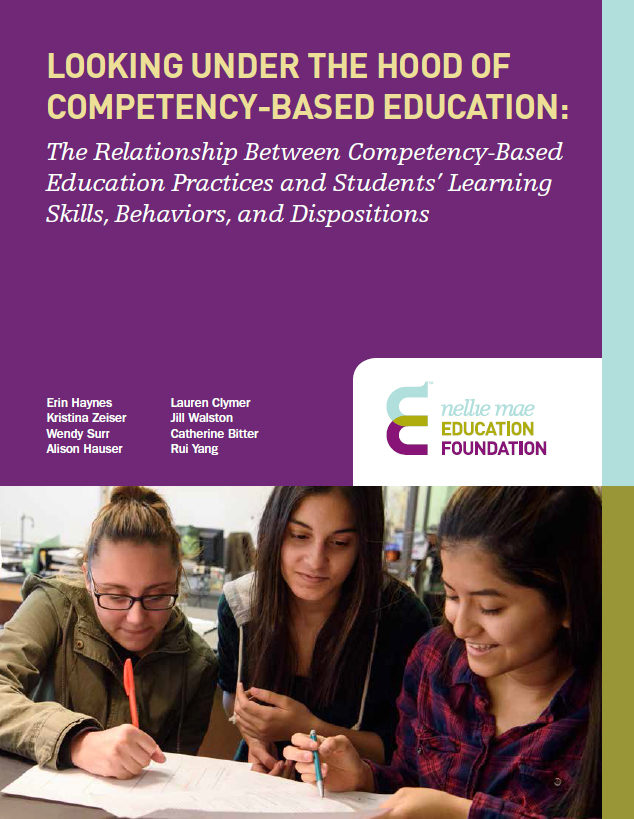Looking Under the Hood of Competency-Based Education: The Relationship Between Competency-Based Education Practices and Students’ Learning Skills, Behaviors, and Dispositions
 Competency-based education is gaining popularity in schools nationwide, and research is just beginning to catch up. A growing practice, competency-based education makes student mastery of learning goals—rather than seat time—the metric to determine student credit and progression. Competency-based education approaches can offer students greater opportunities for deep and personalized learning; as students work toward achieving competency at their own pace, they typically experience more individualized support as well as greater autonomy, flexibility, and responsibility over their own learning—conditions that we would expect to increase academic engagement, motivation, self-efficacy, and other learning capacities that predict academic success.
Competency-based education is gaining popularity in schools nationwide, and research is just beginning to catch up. A growing practice, competency-based education makes student mastery of learning goals—rather than seat time—the metric to determine student credit and progression. Competency-based education approaches can offer students greater opportunities for deep and personalized learning; as students work toward achieving competency at their own pace, they typically experience more individualized support as well as greater autonomy, flexibility, and responsibility over their own learning—conditions that we would expect to increase academic engagement, motivation, self-efficacy, and other learning capacities that predict academic success.
This study takes a closer look at how schools implement competency-based education, and examines how ninth grade students’ experiences of competency-based education practices are related to these “learning capacities,” or the skills, behaviors, and dispositions that students need to learn effectively. Through a careful analysis of competency-based education in a group of high schools in three states, researchers sought to understand which competency-based education practices, if any, are associated with positive changes in students’ learning capacities during their first year of high school.
Key Findings
One of the most striking findings of the study was that the implementation of competency-based education practices was neither comprehensive nor uniform, varying greatly across and within both groups of schools. Many teachers in schools that had not explicitly adopted a competency-based education approach nonetheless reported using practices associated with competency-based education. This suggests that the distinction between competency-based and more traditional models is not as sharp as expected, and that practices may fall along a continuum, even across classrooms within a school.
Five trends stood out:
- Intrinsic motivation (i.e., students’ possession of an internal drive to engage in their education) was the measured learning capacity most strongly associated with competency-based education practices.
- Students’ perceived clarity of learning targets was positively associated with the greatest number of favorable changes in their learning capacities.
- Some practices appear to be related to positive changes in math but not English language arts.
- Providing varied and flexible instruction was one of the only competency-based education practices favorably related to students’ self-regulated learning skills.
- Some learning capacities do not appear to be strongly associated with any specific competency-based education practices.
